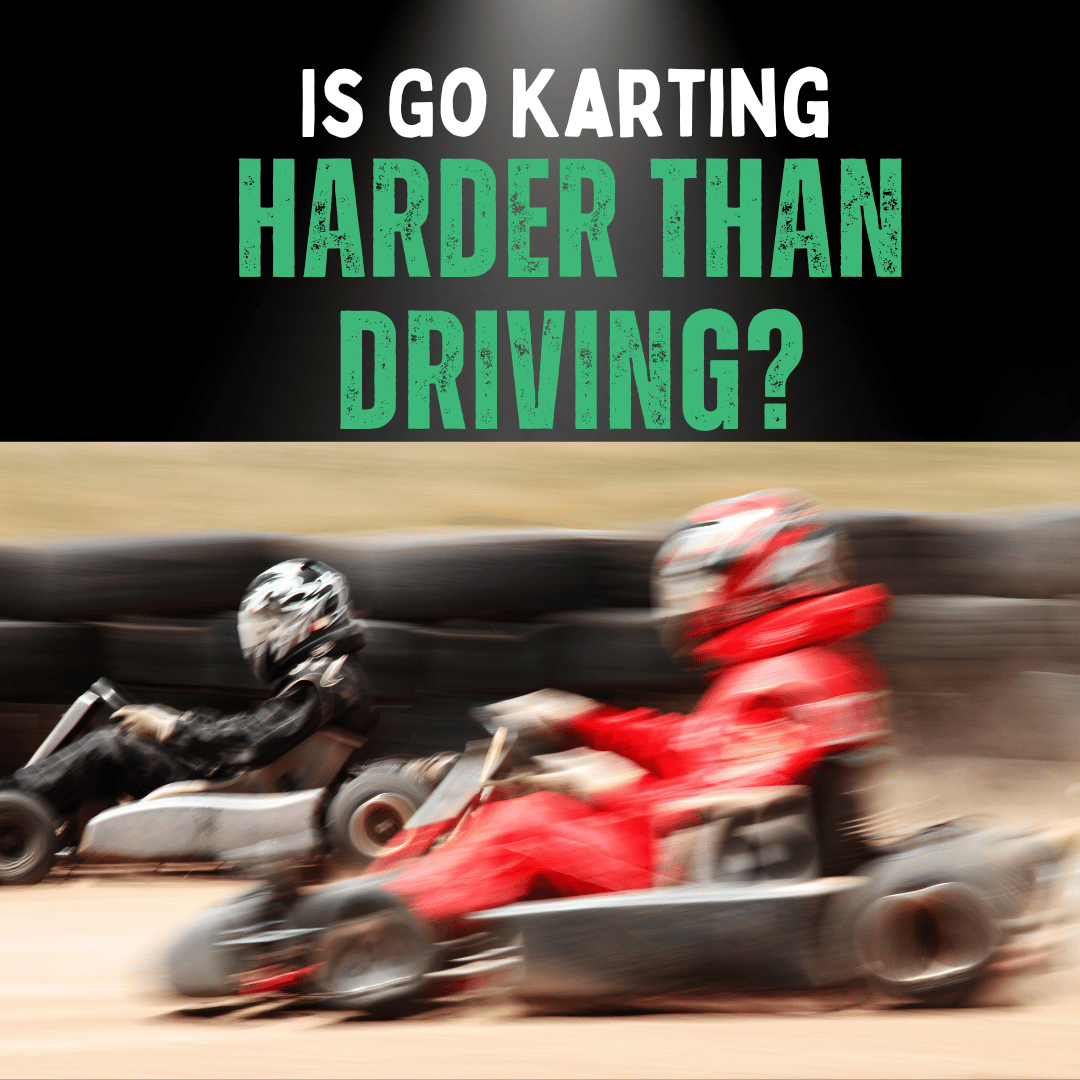
Updated: 25.4.25
Have you ever felt the adrenaline rush of a go-kart race and wondered how it compares to driving a car on the open road?
Are the skills and challenges the same, or does one require more mastery than the other?
With go-karting's rising popularity and unique appeal, many are drawn to compare it with regular driving. Plus, there are some fascinating facts you might not know about go-karts.
In this article, we explore the thrilling world of kart racing and examine how it stacks up against traditional car driving. Buckle up as we dive into the similarities, differences, and what makes each experience special!
Is Go Karting Harder Than Driving?
Go-karts are designed for simplicity and agility, with just a steering wheel, gas and brake pedals, and basic controls. Their minimalist layout makes them lighter and more maneuverable than cars. Whether go-karting is harder depends on the individual's skill and the demands of each activity.
1. Similarities Between Go-Karting and Driving a Car
Four Wheels and Engine/Motor
Both vehicles share fundamental mechanics: four wheels, an engine or motor, and the ability to accelerate and brake. This shared foundation helps bridge the gap between karting and conventional driving.
Steering, Braking, and Accelerating
Both go-karts and cars rely on the same core principles of steering, braking, and acceleration. The steering wheel, brakes, and accelerator work in a familiar way.
2. Differences That Set Go-Karting Apart
Built for Racing vs. Built for Commuting
Go-karts are engineered for racing performance, tight handling, and agility. Cars are built for safety, comfort, and practicality. Whether you're in a kart or a car, the purpose defines the experience.
Weight, Design and Handling
The lightweight frame and short wheelbase of go-karts allow sharp turning and rapid acceleration—traits that distinguish them from heavier, road-ready vehicles.
Technical Components
Unlike cars, go-karts typically lack suspension systems and differentials. This creates a raw, direct driving experience. Want to know more? Check out the science of go-karting.
3. Physical Demands and Safety Considerations
Go-karting can be surprisingly intense. According to F1 driver Romain Grosjean, karting is sometimes more physically demanding than driving an F1 car. It requires upper-body strength and constant concentration.
But is karting dangerous or bad for your back? Safety depends on proper gear and posture while racing.
4. Benefits for Everyday Driving Skills
Training Ground for Control and Reflexes
Karting helps sharpen your reflexes, boost spatial awareness, and master vehicle control. These skills can transfer to road driving. Find out why go-karting is good for you.
5. Is Karting a Sport?
Yes! Go-karting is a recognized motorsport. It includes structured competitions, regulations, and global events. Many professional racers began with karting, including F1 champions. There's even an international governing body: FIA Karting.
Competitive karting requires not just speed, but strategy, discipline, and skill—just like any other sport.
6. From Go-Karts to Formula 1
The Journey of Professional Racers
Most Formula 1 drivers, including Lewis Hamilton and Max Verstappen, began their careers in go-karts. Karting teaches fundamentals like racing lines, braking zones, and throttle control.
Want to get into F1 as a fan? Check out our guide: How To Get Into F1 As A Fan.
Frequently Asked Questions
Is go-karting considered a sport?
Yes. Go-karting is a form of motorsport with official competitions, rules, and training paths. It's often the first step into professional racing.
Is karting dangerous?
Karting is generally safe, especially on regulated tracks using proper gear like helmets and suits. Most injuries are minor, and safety standards are high at modern facilities.
Is go-karting harder than driving a car?
In many ways, yes. Go-karts lack suspension and require fast reflexes, making them more physically demanding than regular driving.
Can karting help improve your driving skills?
Absolutely. It enhances your timing, control, focus, and awareness—all essential for safer and more confident driving on the road.
What is FIA Karting?
FIA Karting is the international governing body for professional karting competitions. It sets the standards for equipment, safety, and race rules around the world.
Get in Touch 🚀
Loved what you read? Have questions about kids' ride-on toys or want to start karting?
Explore our full range at RiiRoo.com or chat with us live for help!
Visit RiiRoo









Share:
How to Fix Go-Kart Acceleration Problems
Why Are Dirt Bikes So Expensive? 2025 Cost Guide